Ever since Amazon banned incentivized reviews, running profitable Amazon advertising and Amazon sponsored product ads (Amazon PPC) has become a required skill.
In this post, I’ve compared notes with other 6, 7 and 8 figure Amazon sellers to teach you…
- How to optimally setup and run your Amazon Sponsored Ad campaigns
- How to bid on your search terms to maximize exposure and profits
- How to find profitable keywords to boost your sales
The pay per click(Amazon PPC) strategy that I’m teaching you today is meant for private label sellers only where your product margins are high enough to support an ad spend or (ACOS) of at least 20%.
Before implementing the steps in this tutorial, you should make sure you have a high quality Amazon product listing with rich images, bullet points and product descriptions.
If you have any doubts regarding the caliber of your product listing, then please consult the following posts
- How To Launch A 6 Figure Private Label Product On Amazon – The Definitive Guide
- Amazon SEO – A Step By Step Process To Rank In Amazon Search
I will also go over the different flavors of Amazon PPC ads and teach you exactly how each type of ad works.
Are you interested in creating a strong, defensible brand for your products? If so, I put together a comprehensive package of resources that will help you launch your own online store from complete scratch. Be sure to grab it before you leave!
Amazon Sponsored Products Ads – What Is Amazon PPC?
Amazon Sponsored Products Ads is the most popular variant of Amazon PPC and will form the backbone of your overall Amazon advertising strategy.
Amazon Sponsored Products Ads help customers find and buy your products with ads that appear in the Amazon search results and on Amazon product pages.
Right now, Amazon Sponsored Products Ads are only available to professional sellers. In addition, your products must be listed in one or more eligible categories and own the buy box in order to advertise.
Here’s how they work…
- You choose which products that you want to advertise for
- You decide which keywords to target and how much you want to bid for clicks. You pay money only when someone clicks on your ad
- You adjust your bids and keywords over time to maximize your profits
When you buy Amazon Sponsored Product Ads, your products will appear at the top of the search results as shown in the example below
You can also pay to have your products displayed within a competitor’s product listing under “related products”.
These ads are called Amazon Product Targeting Ads and they allow you to essentially steal a sale from someone else.
The bidding process for Amazon Product Targeting Ads are somewhat different than normal Amazon Sponsored Product Ads in that you bid on an ASIN (Amazon SKU) as opposed to a keyword. But otherwise, the bidding strategy is more or less the same.
Overall, Amazon Sponsored Product ads will make up the bulk of your Amazon PPC ad spend.
Amazon Sponsored Brand Ads (Formerly Amazon Headline Ads)
Amazon Sponsored Brand ads are ads that feature your brand logo, a custom headline, and up to three of your products that are displayed above all of the product listings.
Amazon Sponsored Brands ads appear in the search results and help shoppers discover your brand. You can also use custom messaging to convey your unique value proposition to prospective buyers.
Here’s what an Amazon Sponsored Brand ad looks like
When a customer clicks on the ad, they are taken to a store page that showcases your products. When they click on a product within your store page, they are taken to a product page where they can buy your products.
Here’s what mine looks like.
Amazon Sponsored Brand Ads work almost exactly like Amazon Sponsored Product Ads except the setup is slightly different
- You select the products you want to advertise.
- You upload your logo and select 3 products to go in the ad.
- You decide which keywords to target and how much you want to bid for clicks.
- You adjust your bids over time to maximize profits
In practice, Amazon Sponsored Brand Ads usually result in a slightly lower conversion rate compared to Amazon Sponsored Products Ads but your brand will receive more impressions and exposure to Amazon buyers.
Overall, the optimization process for Amazon Sponsored Brand ads vs Amazon Sponsored Product ads is almost identical.
Amazon Sponsored Display Ads(DSP)
Amazon Sponsored Display ads allow you to easily buy display and video ads to reach prospective buyers when they are NOT shopping on Amazon.
Have you ever noticed that after browsing products on Amazon, the exact products that you were looking at are now following you all over the web?
These Amazon PPC ads were created using Amazon Sponsored Display Ads and can be found on popular blogs, websites and forums.
Here’s what they look like
Here’s how Amazon Sponsored Display ads work
- You create custom audiences of Amazon buyers to reach your ideal audience both on and off Amazon.
- You design a display ad to target these audiences
- Your ads appear on Amazon owned sites and leading publishers online
If you’ve ever run Google Display Ads(GDN) it works exactly the same way except that you have access to purchase behavior from Amazon customers!
Right now, Amazon Sponsored Display Ads are relatively new with high PPC spend minimums so the bulk of this Amazon PPC tutorial will focus on Amazon Sponsored Products Ads and Amazon Sponsored Brand ads.
Click Here For An In Depth Tutorial Of Amazon Sponsored Display Ads
The Keys To Amazon PPC Success
The key to launching a successful Amazon Sponsored Ad campaign can be broken down into 3 basic steps.
One, you must know what your break even point is.
Two, you must run exploratory campaigns to figure out which keywords convert the best for your listings.
Three, you must maximize traffic and sales for your highest converting keywords and avoid bidding on poor converting ones.
At a high level, this sounds pretty straightforward but the devil is always in the details:)
Below is a step by step tutorial on how to optimize your Amazon PPC ads for maximum profits.
Step 1: Figure Out Your Breakeven Point
Before you spend a single penny on Amazon PPC ads, you need to know your breakeven point. After all, there’s no way to know whether your ads are profitable unless you know your true costs.
Let’s consider the following hypothetical product on Amazon.
In this example, you are selling your product for $20. It costs you $13 (including cost of goods and Amazon fees) which leaves you a profit of $7 per sale.
$7 / $20 yields results in a margin of 35%.
As a result for this product, you can spend up to 35% of your sales on ads and still break even. Anything over 35% and you lose money!
In terms of actual dollars, you can spend up to $7 per single product sale without sacrificing profitability.
Make sure you figure out your breakeven point BEFORE spending any money on ads!
Step 2: Determine Your Target ACOS
Once you’ve figured out your break even point from step 1, you now need to figure out what you want your target ACOS to be.
Here’s a quick refresher. ACOS stands for advertising cost of sales which is the percent of attributed sales spent on advertising.
This number is calculated by dividing your total ad spend by the amount of attributed sales. For example, if you spend $4 on advertising resulting in $20 in sales, your aCOS would be 20%.
Your desired target ACOS will depend on your campaign goals.
For example if you are launching a brand new product on Amazon, you may want to set your target ACOS at your break even point to jumpstart your sales.
Using the example in step 1, we determined that our overall margin was 35%. As a result, we would set our target ACOS to 35%.
Note: You can think of running your ads this way like doing a giveaway.
However if your product is mature and you want to achieve a good balance of sales and profitability, you might want to set your target ACOS at 20%.
Does that make sense?
If you want to be more aggressive with sales at the expense of profitability, then set your ACOS closer to your breakeven point.
Eventually, you’ll start generating organic Amazon sales in addition to sales generated by Amazon PPC.
And once you start ranking organically in Amazon search, you should switch your ad metrics from measuring ACOS to ACOOS.
What is ACOOS?
ACOOS stands for advertising cost of “overall” sales and is calculated by taking your ad spend and dividing it by your total sales as opposed to just your sales attributed to advertising.
Why use ACOOS as opposed to ACOS to set your keyword bids?
When it comes to selling on Amazon, sales always leads to more sales. As a result, your advertising efforts will almost always result in increased organic rankings and traffic.
So even if you are hitting your ACOS targets, you could be leaving a lot of money on the table if you don’t consider the effects of Amazon PPC on your organic sales as well.
To take organic sales into account, use ACOOS instead of ACOS and you will get a more accurate picture of your advertising effectiveness.
Step 3: Always Start With An Amazon Automated Keyword Campaign
Even if you already know the keywords that you want to target, you should always start with an Amazon automated keyword campaign.
An Amazon auto campaign is when you allow Amazon to freely explore and choose what keywords to bid on for your products.
Believe it or not, Amazon actually does a pretty good job of bidding on keywords for you based on the data in your product listing.
But the real reason to run an Amazon automatic keyword bidding ad is because your ads will show up within your competitor’s listings.
For example, here’s where your automated ads will be displayed
In addition, there auto campaigns will gather keyword and conversion data for your products so you can refine your campaigns later.
Here’s a tutorial on how to set up an auto campaign step by step.
Click on Advertising->Campaign Manager
Create a new campaign and name it. Make your average daily budget $20. Choose Automatic Targeting.
Create an adgroup. Add the products you want to buy ads for. Set your default bid to $1.00
Step 4: Figure Out What Keywords To Bid On
Besides having your ads displayed in relevant product listings, automatic keyword campaigns also allow you to find relevant product keywords to start manual ad campaigns.
While you can export and analyze a spreadsheet of keywords from your auto campaigns, many professional sellers often skip this step and use specialized tools to speed up the process.
For example, a keyword tool like Scope allows you to instantly know your highest converting product terms by analyzing your competitors.
Instead of letting Amazon haphazardly bid on random keywords for you, you can now perform what is called a reverse ASIN lookup on related products.
For example, let’s say you sell a garlic press and you want to find proven high converting keywords to bid on.
Now you can look at the bestselling garlic press on Amazon, use a tool like Scope to do a reverse ASIN lookup, and find out which keywords this product is ranking for on Amazon and which keywords generate sales.
It might be hard to see from the image above, but Scope is telling me that the best selling garlic press on Amazon generates most of its sales from the following circled keywords below.
For example, the keyword “garlic press” generated 62 sales last month.
The keyword “garlic smasher” generated 50 sales.
The keyword “garlic crusher” generated 46 sales. etc…
Well guess which keywords I’m going to bid on for my Amazon Sponsored Product Ad Campaigns?
You guessed it!
Instead of wasting money running an automatic keyword campaign on Amazon, I can take a shortcut and bid directly on keyword terms that I know are already converting for other similar products!
This is extremely powerful and will save you money and time!
Step 5: Understand That Running Profitable Ads Is An Iterative Process
Before we get into the nitty gritty of Amazon ad creation, here’s a high level overview of my PPC strategy so you don’t bogged down in the details.
Running profitable Amazon Sponsored ad campaigns is an iterative process that can be summed up with the following feedback loop…
- Start with a broad match keyword campaign based on keywords found in Scope
- Explore the keyword space with your broad campaigns
- Find out which keywords are NOT converting well and add those keywords to your negatives so you don’t waste money
- Find out which keywords are profitable, create a manual exact match “winners” campaign and bid higher on these keywords.
- Adjust your overall bids accordingly to meet your ACOS goals
- Rinse and repeat
Your ability to iterate and improve your ad campaigns is highly dependent on how diligently you analyze your data. But what sucks is that Amazon’s out of the box conversion reporting is clunky and painful to use.
For example in order to extract performance data for your campaigns, you have to run a manual search term report in Amazon. Go to Reports->Advertising Reports.
Then, you have to copy this data over to an Excel spreadsheet before you can analyze the data.
Personally I find this process tedious and ridiculous. Because I’m a lazy person at heart, if I don’t have all the data in front of me on a single dashboard, I’ll never optimize it.
As a result, the remainder of this tutorial may reference screenshots from Ignite which is a tool that helps you manage and automate your Amazon PPC campaigns.
In a nutshell, Ignite unifies all of your Amazon sponsored ads data for you on a single interface so you can easily create and adjust your ads based on your keyword performance.
You can probably get by with Amazon’s native ad interface if you only have 1 or 2 products but it is clunky and not user friendly. Remember, the harder it is to look at your data, the less likely you’ll do anything about it:)
Click Here To Try Ignite Free For 30 Days
Step 6: Launch A Broad Match Campaign
Armed with the keyword research data you gathered from Scope in step 3, you should now launch a manual broad match PPC campaign on Amazon.
The way a broad match campaign works is that any shopper who types in a search phrase that contains your keywords in any order will match for your products on Amazon.
For example, if you bid on the broad match phrase “garlic press”, then someone who types in “extra large press for garlic” will display your ad.
The purpose of starting with a broad match campaign is to use existing high converting keywords as a base to gather keyword and conversion data for your products.
Using the garlic press example above, I would launch a manual broad match campaign with the following keywords
- garlic press
- garlic smasher
- garlic crusher
- ginger press
- garlic peeler
- garlic masher
- garlic cutter
There are a couple of important things to note here.
Even though Scope often spits out over 500 keywords, you should focus your bids on the highest converting keyword phrases.
You also need to be careful and avoid bidding on overlapping keywords.
For example, you’ll notice that I’m only bidding on “garlic press” and not “large garlic press” because the broad match keyword “garlic press” already covers “large garlic press”. Make sense?
Step 7: Add Poor Performing Keywords As Negatives
The remainder of this tutorial will reference actual data from one of my own Amazon PPC campaigns.
First off, here’s what my broad match campaign looks like for one of my products.
For this campaign, my target ACOS is 20% which means that I’m willing to spend up to 20% of my revenues on advertising.
Before you look at your search term data for the first time, you should let your campaign run for at least 2 weeks. And in terms of bidding, if you don’t know how much to bid, then start with $1/click and adjust accordingly.
Once you have a few weeks worth of data under your belt, you can then open up Ignite and check out how your keywords are performing.
The first thing that I do is click on the filters tab and select the following parameters.
- Keywords that have had 5 clicks or more
- Keywords with a low conversion rate
In the example above, the keywords teal linen napkins and purple linen napkins are not converting at all.
Well guess what? We don’t sell teal linen or purple linen napkins in our store.
As a result, I set these terms as “Exact Match Negative” keywords for this campaign so I don’t show ads for these search phrases going forward.
Step 8: Move High Converting Keywords To A Winners Campaign
After I’ve added poor performing keywords as negatives, the next step is to find out which keywords are converting well.
Once again, I go back to Ignite and create a high converting keyword filter based on the following parameters.
- Keywords with an ACOS < 20%
- Keywords with a conversion rate > 5%
Here are some very rough guidelines on conversion rates. (This is highly dependent on product type so please take this with a grain of salt).
- Greater than 10% conversion rate – You are doing well. Your product and ads are relevant and converting well
- Greater than 5% conversion rate – You are above average
- Less than 5% conversion rate – Your product listing/pricing is either not attractive or there is heavy competition in your niche
In a nutshell, you want to look for keywords that are converting well and have an ACOS less than 20% (or whatever your ACOS goal is).
You should then create a separate exact match “winners campaign” where you will bid higher on these search phrases.
In the above example, I moved the following keywords over to a separate “winners” campaign consisting of all exact match search terms where I’m bidding approximately 30% more.
- linen napkins
- white linen napkins
- linen cocktail napkins
- linen napkins set of 12
- linen dinner napkins
- cocktail napkins linen
- white linen cocktail napkins
Why should you move your high converting keywords to a separate campaign?
Because you know that these keywords are “winners”, you want to bid higher on these terms to get a larger percentage of the searches.
For my winners, I typically bid 25-50% higher as long as my ACOS falls within my target range of 20%.
The upshot is that your ACOS will suffer a little bit with a higher bid, but you’ll get a higher impression count and more sales.
Step 9: Check Your Broad Match Campaign Regularly For New Winning Keywords
Optimizing your Amazon PPC campaigns is an iterative process and you need to check on your campaigns regularly to adjust your ads.
Remember, you want to make low converting keywords negative and move high converting keywords to your winners campaign.
If you’re launching a brand new campaign, you should check on it once per week in the beginning. But once things reach steady state, you can dial it down to once or twice per month to check on your target ACOS. Once again for reference, my target ACOS is 20%.
One thing that’s nice about Ignite is that the tool gives you campaign suggestions that help you reach your ACOS goals. For example, here are some suggestions that Ignite gave me that I updated with a single click.
Step 10: Run An Automatic Keyword Campaign In The Background At A Low Bid
One question I often get asked is whether you still need to run an automatic keyword campaign with this Amazon ads strategy. The answer is yes.
I typically run an Amazon automated campaign at a very low bid to pick up any long tail keywords that I might have missed with Scope.
Overall, here’s a snapshot of what all 3 campaigns look like in my account.
Note: These campaigns aren’t named very well. Napkin MANUAL is my broad match campaign. Linen Napkins is my auto campaign.
Step 11: Troubleshoot Your Unprofitable Campaigns
If you’ve followed all of the steps in this tutorial and you still are not profitable, then you have to take a harder look at both your Amazon listing and your numbers.
For example, here are some guidelines for your clickthrough rate assuming you’ve gotten at least 1000 impressions. (Once again, these are just guidelines and should be taken with a grain of salt).
- Greater than .5% CTR – Your ad and product combo is relevant
- Greater than .2% CTR – You are above average
- Less than .2% CTR – There’s a disconnect between your ad and your product.
If you find that your CTR is over .5% but your conversion rate is less than 5%, it means that there might be something wrong with your listing or you’ve chosen a really competitive niche.
Take a look at your Amazon listing closely.
- Are your bullet points optimized?
- How are your images?
- How do you compare to your competitors?
- Are you priced too high?
Bottom line, if you are getting a high CTR with low conversions, then your listing and/or product is likely the problem and not your ads.
However if you find that your conversion rate is solid but your ACOS is high, then you can simply reduce your bid accordingly until you reach your ACOS goals.
Running profitable Amazon ads requires practice to troubleshoot so you have to be patient.
But if you’ve followed this entire tutorial and are still having problems, then here’s a list of common mistakes that new Amazon advertisers make.
The Different Amazon Automatic Targeting Campaigns
In an effort to provide you with more control, Amazon offers different automatic targeting campaigns for you to choose from.
- Close Match – Ads will be shown to shoppers whose searches “closely” match your products for sale
- Loose Match – Ads will be shown to shoppers whose searches “loosely” match your products for sale
- Substitutes – Ads will be shown to shoppers who view the detail pages that “closely” match your products for sale
- Complements – Ads will be shown to shoppers whose searches “complement” your products for sale
Close Match Automatic Targeting Amazon PPC Campaigns
For close match Amazon automatic targeting campaigns, Amazon will try to only show your products for searches that “closely” match the products you have for sale.
In general, these are the primary automatic Amazon search campaigns that you should be running because they have the highest conversion rate.
The only disadvantage to this match type is that Amazon won’t show your products for as many keyword queries so your impression count may be less.
Loose Match Automatic Targeting Amazon PPC Campaigns
For loose match Amazon automatic campaigns, Amazon will try to only show your products for searches that “loosely” match the products you have for sale.
In general, you should only turn this option on if you are already converting well with your “close match” campaigns and you wish to scale your ads for higher impressions.
My experience with these ads are that they convert mostly worse than the close match campaigns but the impression count is significantly higher.
Substitute Products Automatic Targeting Amazon PPC Campaigns
When you enable “substitute products”, Amazon will show your ads on the product detail pages of similar products.
For example, if I sell white linen napkins, then Amazon will show my white linen napkins on other white linen napkin product listings that I do not own.
If your product image, listing or price is better than similar products on Amazon, then these ads should perform well for you.
Complement Products Automatic Targeting Amazon PPC Campaigns
When you enable “complement products”, Amazon will show your ads on the product detail pages of complementary products.
For example, if I sell linen dinner napkins, then Amazon will show my dinner napkins on complementary product listings like cocktail napkins or utensils or placemats.
These types of ads are hit or miss and depend greatly on the types of products that you have to sell.
I recommend starting out with substitute products first and then try complements if you need addition impressions for your ads.
Looking at my campaigns, complement product targeting has not converted well at all but volume is low.
Amazon Dynamic Bid Adjustments
For every campaign you create, Amazon will give you the option to try their machine learning bidding algorithms.
You have 3 choices
- Dynamic Bids Down Only – Amazon will automatically lower your bids if a customer is performing a search that Amazon deems is unlikely to convert.
- Dynamic Bids Up And Down – Amazon will increase your bid whenever they believe that a customer is highly likely to make a purchase
- Fixed Bid – Amazon will not adjust your bid no matter the circumstances
In my experience and from speaking with colleagues, Amazon’s dynamic up and down bids are not ready for prime time yet. As a result, you should select Dynamic Bids Down Only for your campaigns.
Amazon Dynamic Placement Bid Adjustments
In addition to automated up and down bid adjustments, Amazon also allows you to dynamically adjust your bids to achieve higher placements in the search results.
For example, if you would like to reach the top of the search results more often, you can tell Amazon to automatically bid higher when this is a possibility.
Here are your options
- Top Of Search – These bid adjustments will affect placements on the top line of the search results
- Product Placement – These bid adjustments affect ads on the product details page, and all non-search placements such as the add to cart page etc…
- Rest Of Search – This category covers ads shown in the middle or at the bottom of the search results
Feel free to experiment with each as your mileage will vary.
Mistake #1: Not Knowing Your Breakeven Point
Most people who are new to sponsored product ads tend to run their campaigns without a specific goal in mind. Before you even run your first ad, you must know what your margins are.
Let’s say you have a margin of 30%, then that means you can have a max ACOS or advertising cost of sales of 30% if you want to breakeven. Any ACOS higher than 30% and you will lose money.
So assuming your upper bound is 30% using the example above, what should your target ACOS be?
The answer to this question is not cut and dry and it depends on where you are in the lifecycle of your product. As a result, expect your ACOS goals to change over time.
For example, if you are launching a brand new product and your margins are 30%, you might be willing to spend 30% of your revenues on ads to maximize your product exposure and maximize your sales.
However if your product is mature and your focus is profitability, you might want to set a target ACOS of 15-20% to maintain an even balance of sales and profit.
Whatever you decide is up to you, but make sure you have a goal in mind so you can follow a consistent strategy.
Mistake #2: Having A Poor Converting Listing
More than half of the time, the root cause of poor Amazon PPC performance is due to a poorly optimized Amazon listing. Before you blow any money on ads, you should make sure that the following bare minimum conditions are met.
- You have a high quality header image that stands out among the competition.
- You are using ALL of your image slots to show your product in use at different angles
- Your bullet points clearly convey the value propositions of your product
- Your product title clearly conveys the type of product you are selling.
If you are unsure about the quality of your product or listing, the easiest way to tell is by looking at your conversion data.
In your Amazon seller central, go under Business Reports->Detail Page Sales And Traffic, and look at your session percentage for your product.
If your session percentage is below 5%, then you might have a conversion problem.
If your session percentage is above 5%, your listing is probably doing ok.
If your session percentage is above 10%, then you’re in good shape.
Please take these guidelines with a grain of salt as your mileage will vary depending on the nature of your product. But feel free to use these percentages as a general rule of thumb.
Bottom line, if your conversion rate is lower than 5%, then I’d take a closer look at your listing to see how it can be improved.
Mistake #3: Not Structuring Your Campaigns Properly
Another common mistake I often see is poor campaign structure. Hypothetically speaking, let’s say you run a linens store and you carry handkerchiefs, linen napkins and aprons in your shop:)
What you want to avoid is lumping disparate products together in your campaigns.
For example if you look at my sponsored ads dashboard, I’ve created separate campaigns for my handkerchiefs, linen towels, napkins and aprons. Each campaign is targeting a completely different set of keywords.
The other thing to notice about the way I run ads is that I have multiple campaigns going for each product category.
Auto Campaign
This campaign allows Amazon to explore the keyword space for me. Everyone should be running an automatic campaign simply because Amazon will show your products underneath competing products!
Broad Campaign
Using a tool called Scope, I peer into the Amazon listings of my competitors to find out which keywords are generating sales.
I then add these keywords as broad match keywords in a separate campaign to see how they perform. By choosing broad match, I’m allowing Amazon to match my ads with visitors performing searches with these keywords in any order.
Click here to checkout Scope for free
Winners Campaign
Finally, I pick and choose the highest performing keywords in my auto and broad match campaigns as “exact match” phrases in my winners campaign.
These are keywords that are pretty much guaranteed to convert at a high rate and I bid higher on these phrases.
In my experience, this is the best way to run your ads to maximize your sales for a given budget. In fact, it is very similar to the strategy that I employ for Google Adwords.
Mistake #4: Not Gathering Enough Amazon PPC Data Before Making Changes
Most Amazon Sponsored Product Ad newbies are very impatient. In fact, I’ve had students come to me after just a few days only to complain that Amazon PPC ads don’t work.
Here’s the thing.
Running profitable ads is an iterative process. You have to gather sufficient data BEFORE making any changes or conclusions with your ads.
What does “sufficient data” mean exactly? This is where things get a little hazy because everyone uses different metrics. For me, I use a combination of common sense and my gut feel.
First off, I always let my ads run for at least a week or two before even looking at the data. Then I look at keywords with at least a 1000 impressions to see if I can draw any conclusions.
Sometimes, I’ll create negative matches right away for obvious keywords that will never result in sales. For example, if someone is looking for red handkerchiefs and I don’t sell any, then that keyword goes negative right away.
Other times if I see a really high conversion rate for a particular keyword, I’ll add it to my winners campaign. But more often than not, I just let things run until I can draw a conclusion.
Do not make adjustments to your campaign until you’ve gathered enough data! Try not to look at your ads every day. Instead, make a point of checking in once per week to draw any conclusions.
Otherwise, you’ll spin in place and your data will be all over the place.
Mistake #5: Choosing Too Many Keywords Or Keywords That Are Too Broad
As a general rule of thumb, I tend to choose keywords that are 2-3 words long for my broad match campaigns. This allows a balance of keyword exploration and profitability.
The problem with Amazon PPC beginners is that they choose keywords that are either too descriptive or not descriptive enough.
For example, I sell linen napkins on Amazon. However, I would never ever bid on the keyword “napkins” because it’s way too broad.
After all, you can find cotton napkins, paper napkins, polyester napkins etc…, none of which would be relevant to what I sell.
On the flip side, you should also avoid choosing phrases that are too long. For example, I would never bid on a long tail keyword like “set of 12 linen napkins with hemstitched edges” for a broad match campaign.
Not only would this phrase garner very little traffic but it would overlap with my “linen napkins” keyword.
Bottom line, choose 2 or 3 keyword phrases for your broad match exploratory campaigns that you think best represent your product.
Mistake #6: Not Making The Right Adjustments
Getting sales on Amazon is addictive. I get it. But never let your campaigns run willy nilly at the expense of profitability for a short lived endorphin rush.
I’ve had students come to me after running their campaigns for over 6 months with an ACOS of 150%+ without making any adjustments!
Here’s what you need to do.
As soon as you find a keyword that is not converting or will never convert for your listing, add it to your list of negative keywords.
If you have a keyword that is very relevant to your listing but not quite profitable, then lower your bid until your ACOS falls inline with your goals.
If you have a keyword that is tangentially relevant, generates an occasional sale but is wildly unprofitable, then consider making it a negative keyword or lower your bid to the point where you will make a profit.
Never let your campaign stay stagnant just because it’s making a couple of sales at the expense of profitability!
Amazon Sponsored Products Video
Periodically, I invite guest speakers to talk to the students in my Create A Profitable Online Store Course.
In the video below, Jeff, Ed and I got together to discuss some common Amazon PPC pitfalls with our respective audiences. Enjoy!
photo credit: Nils Geylen Archives

Ready To Get Serious About Starting An Online Business?
If you are really considering starting your own online business, then you have to check out my free mini course on How To Create A Niche Online Store In 5 Easy Steps.
In this 6 day mini course, I reveal the steps that my wife and I took to earn 100 thousand dollars in the span of just a year. Best of all, it's free and you'll receive weekly ecommerce tips and strategies!
Related Posts In Amazon Advertising Strategies
- What Is Amazon Attribution And How It Works
- Amazon Advertising: Is Hiring An Agency Worth It? (Case Study)
- What Is Amazon DSP And How Does It Work? (Case Study)
- Amazon PPC – A Simple Amazon Advertising Strategy That Works

Steve Chou is a highly recognized influencer in the ecommerce space and has taught thousands of students how to effectively sell physical products online over at ProfitableOnlineStore.com.
His blog, MyWifeQuitHerJob.com, has been featured in Forbes, Inc, The New York Times, Entrepreneur and MSNBC.
He's also a contributing author for BigCommerce, Klaviyo, ManyChat, Printful, Privy, CXL, Ecommerce Fuel, GlockApps, Privy, Social Media Examiner, Web Designer Depot, Sumo and other leading business publications.
In addition, he runs a popular ecommerce podcast, My Wife Quit Her Job, which is a top 25 marketing show on all of Apple Podcasts.
To stay up to date with all of the latest ecommerce trends, Steve runs a 7 figure ecommerce store, BumblebeeLinens.com, with his wife and puts on an annual ecommerce conference called The Sellers Summit.
Steve carries both a bachelors and a masters degree in electrical engineering from Stanford University. Despite majoring in electrical engineering, he spent a good portion of his graduate education studying entrepreneurship and the mechanics of running small businesses.




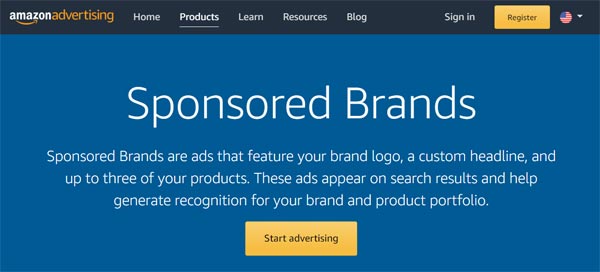
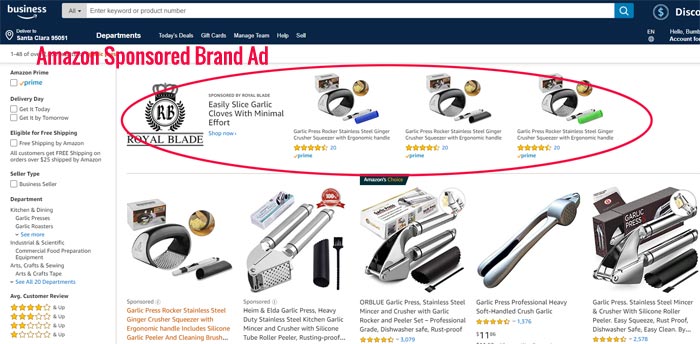
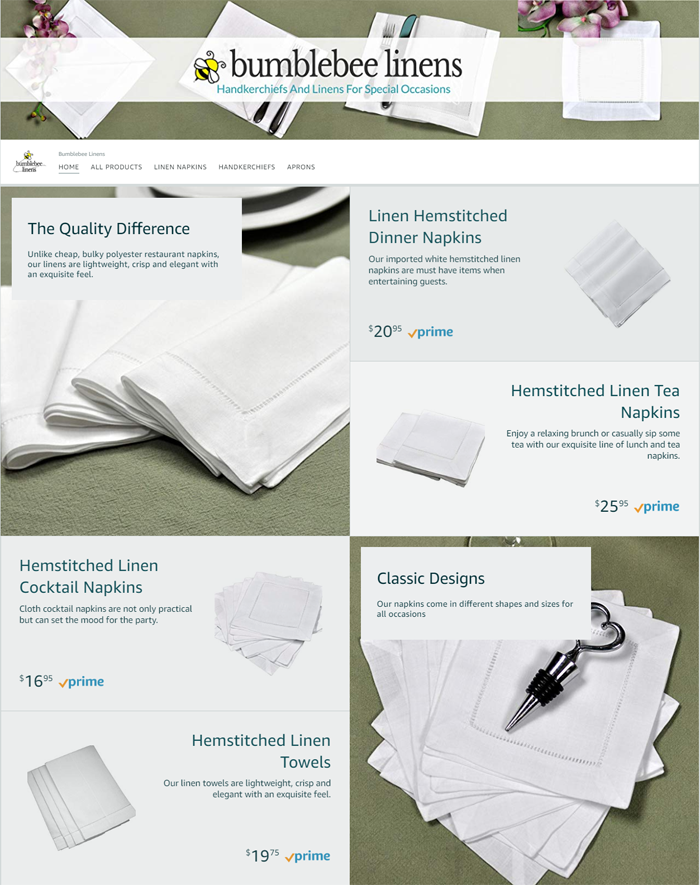
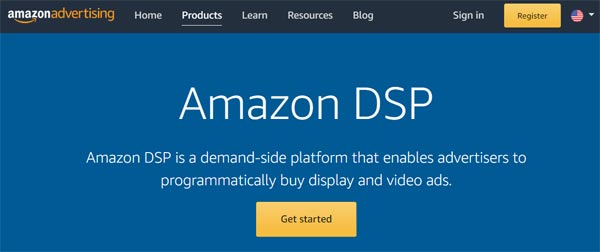
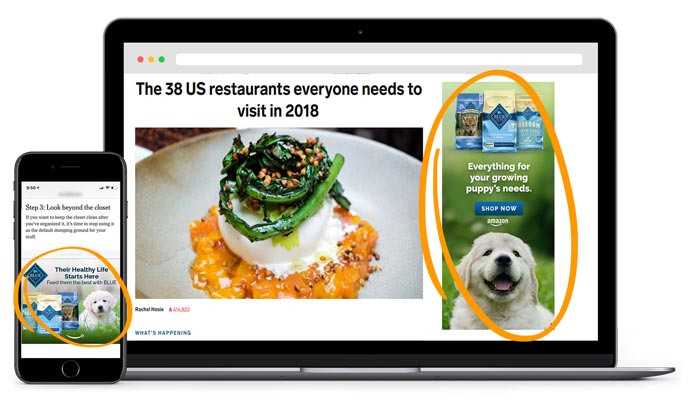

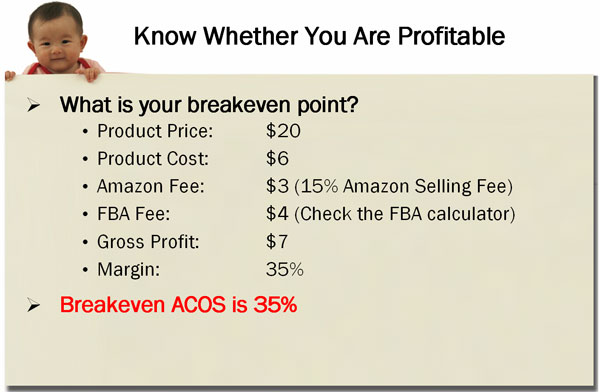

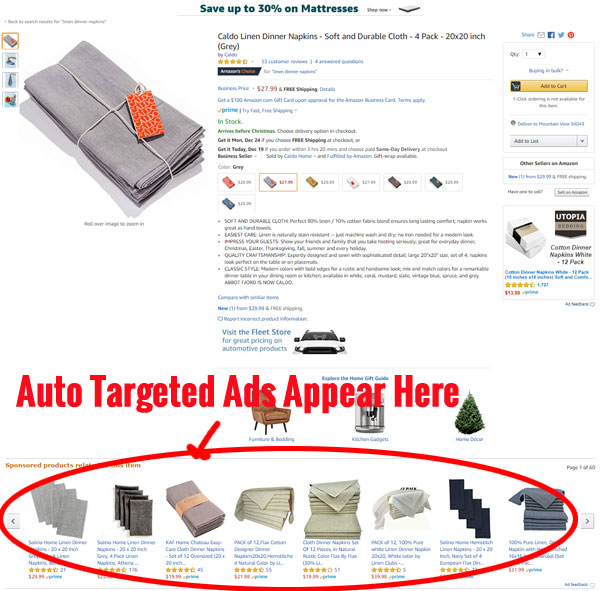

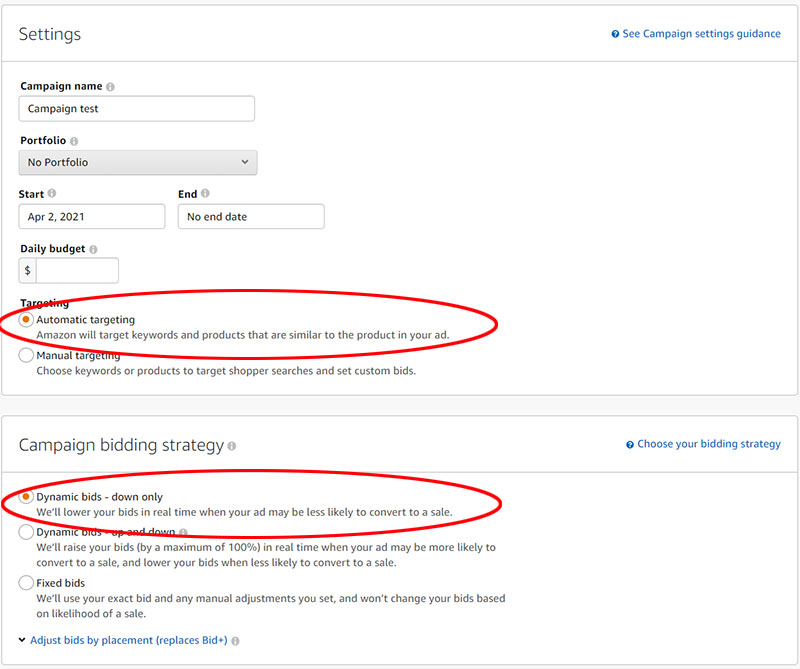
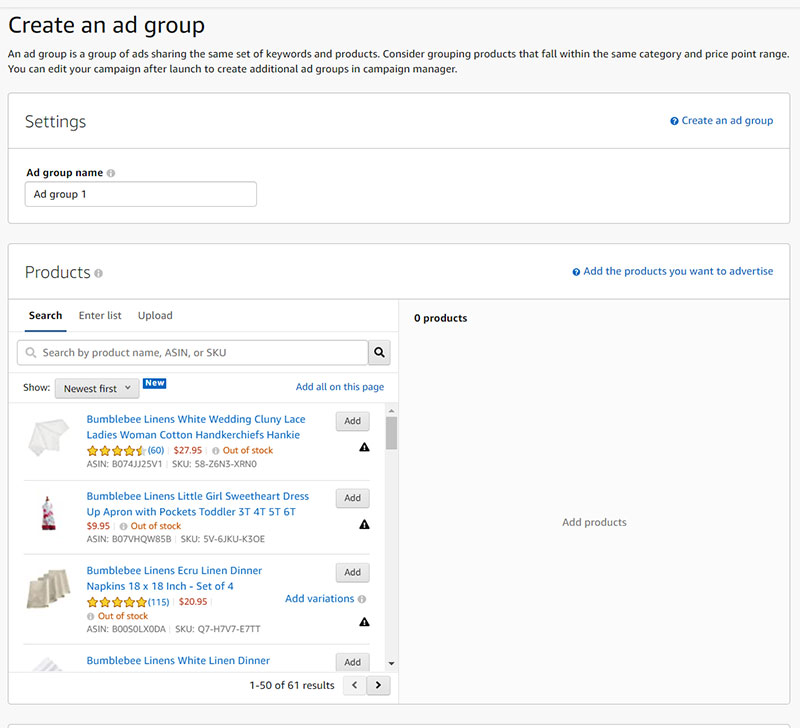
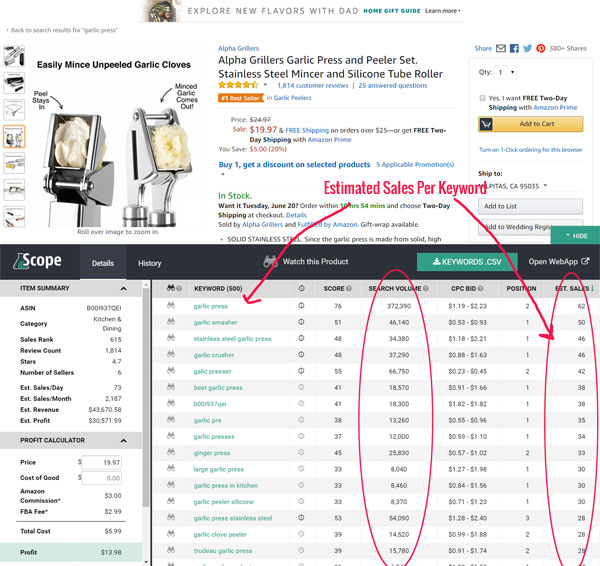
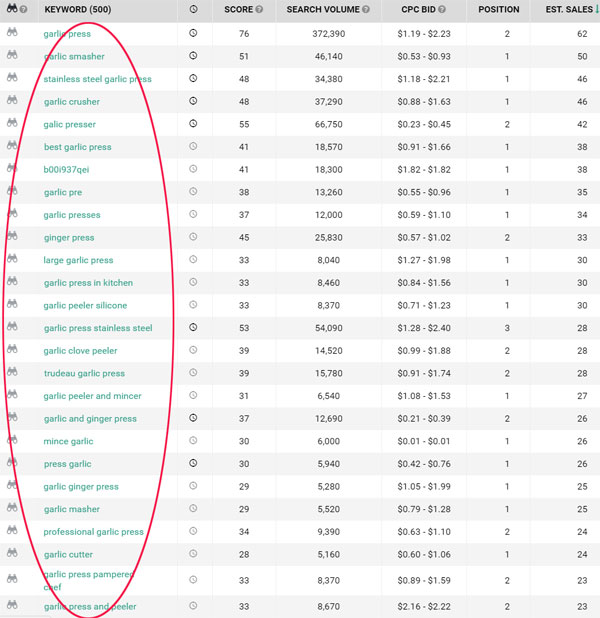
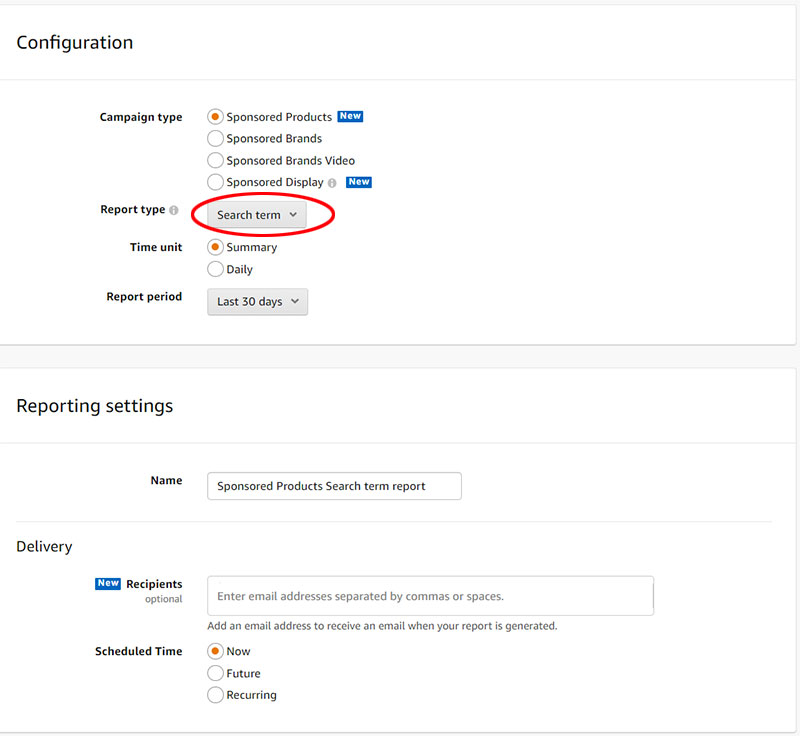
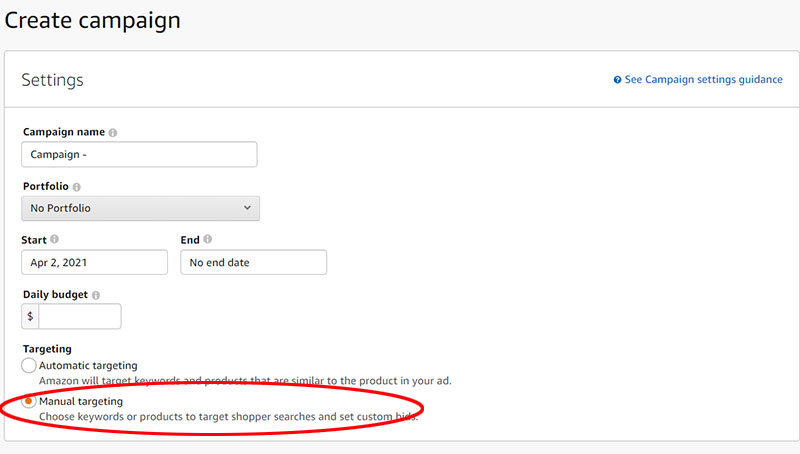
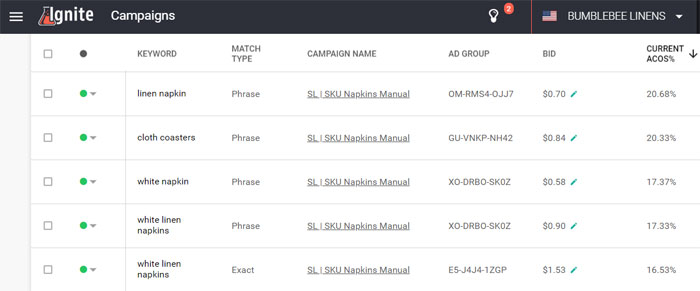
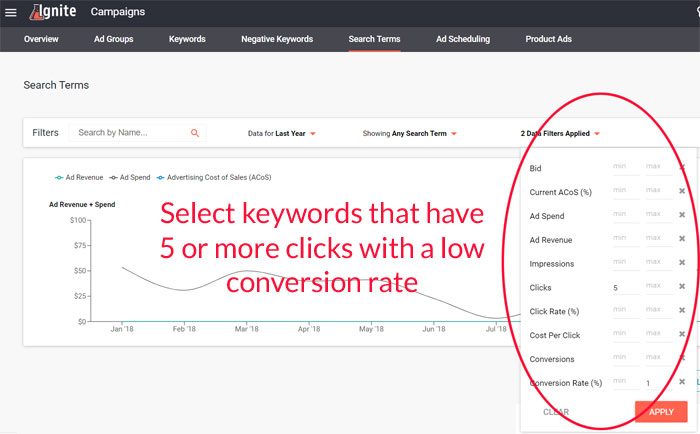

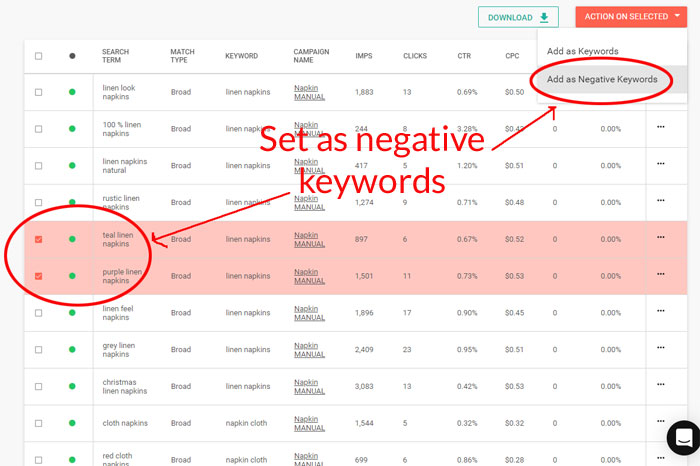
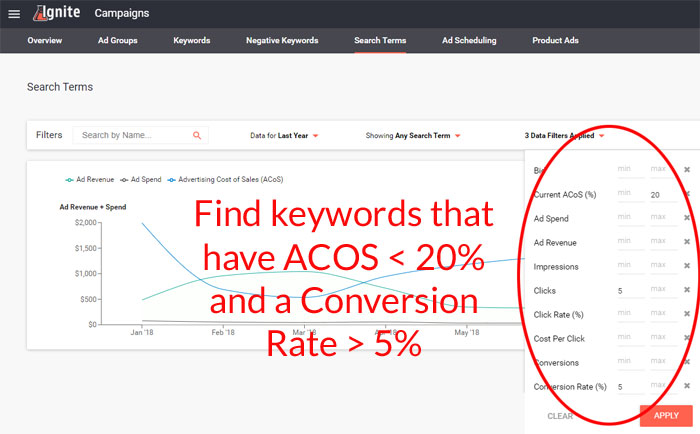
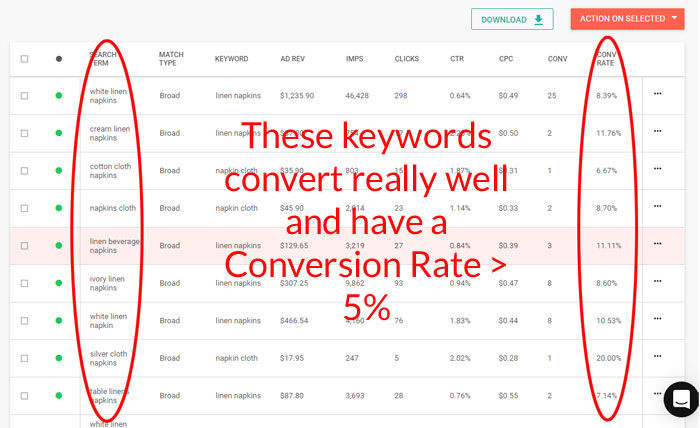
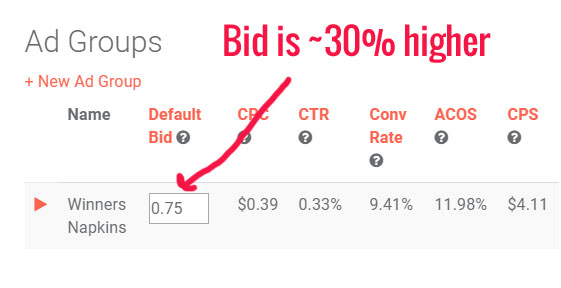
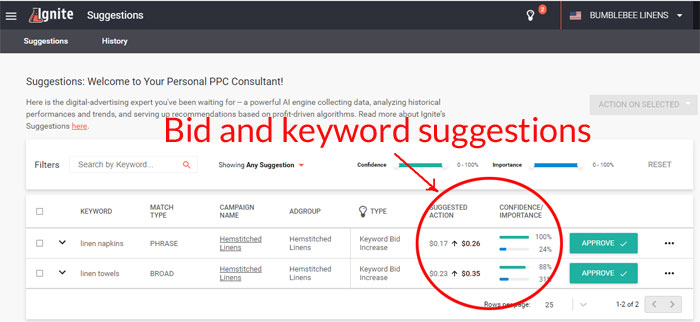






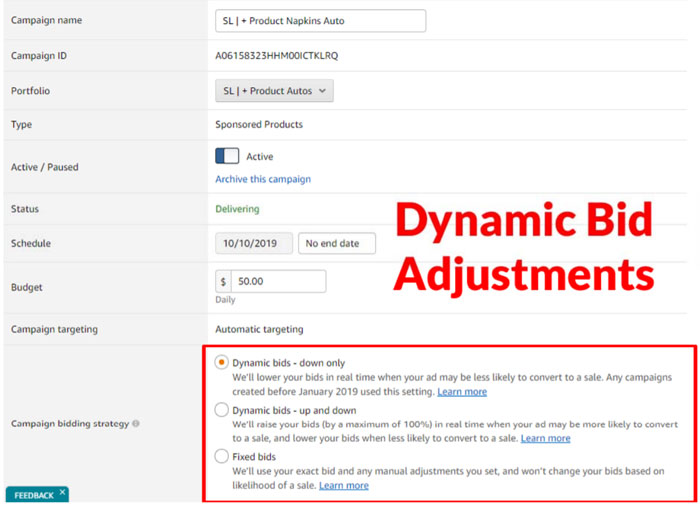
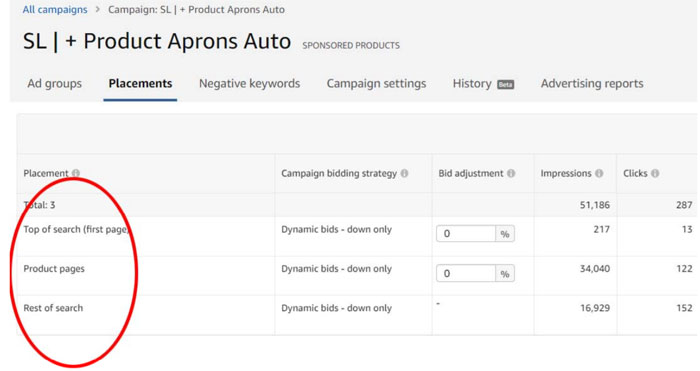

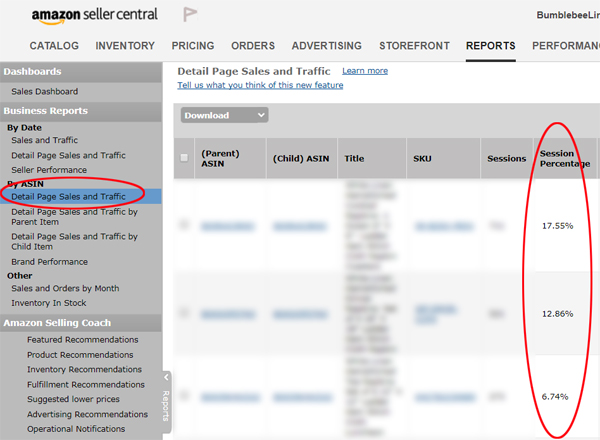
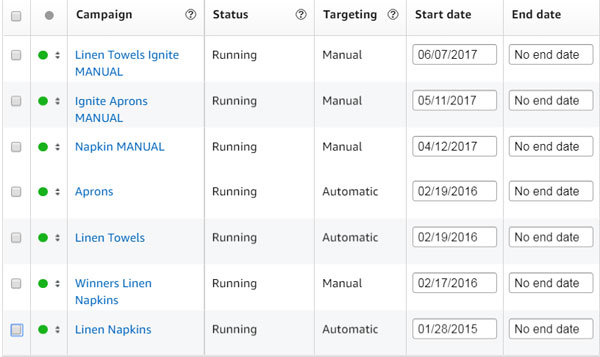














Great post, Steve , and very timely as we are also doing this right now. One thing I would add is that returns can be a significant issue for some businesses eg Apparel. In those cases, returns should also be included in the breakeven point calculation. For eg. 20% returns are not unheard of in apparel just because of sizing issues. Seller may lose $10-$15 in FBA fees for every return. In that case, breakeven calculation should include a returns related cost of 20%*$15 = $3.
Returns can have a huge impact on breakeven point and profitability and should be accounted for.
Thanks,
Kapil
Absolutely Kapil. I tried to keep the example as simple as possible:)
Hey Steve,
Great post! Do you just go with the “Suggested bid” when doing the automatic and manual campaigns before the 30% increase on the winner campaign?
This is a great post! I learned something new, but it seems the “scope” tool is not working, does it have a new landing page?
Hi do you also use ignite to manage your auto campaigns?
Hi Steve,
Thanks for a great article. I’ve been following your blog for over 5 years now and always find value in the content that you share.
I have a question about structuring Amazon PPC campaigns.
I have a listing with variations. Would I add all variations to the same Ad campaign OR create separate campaigns for each variation? If creating separate campaigns, should I let some of the keywords overlap or not?
(A little note about my product: my variations have distinctive differences to the point that I am trying to rank them for different products. )
I would appreciate any advice that you might have for me.
Hi,
Thank you for an in-depth coverage of Amazon PPC.
Doesn’t turning off non-performing keywords work the same way as adding them to the negative list. Maybe I am not following this properly.
Thanks,
Amir